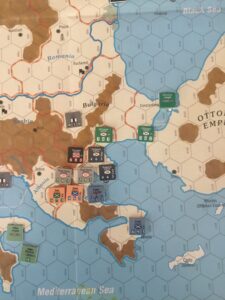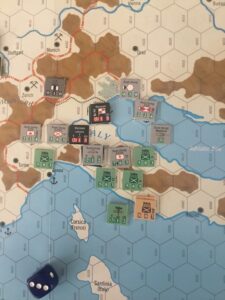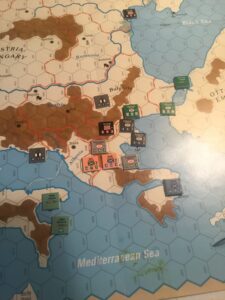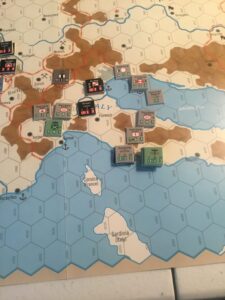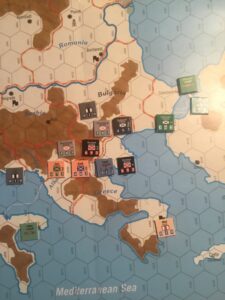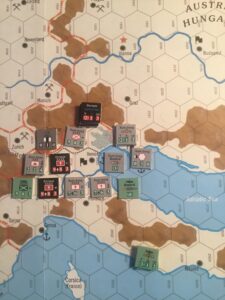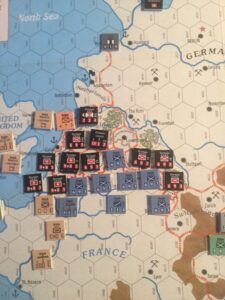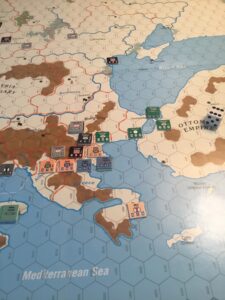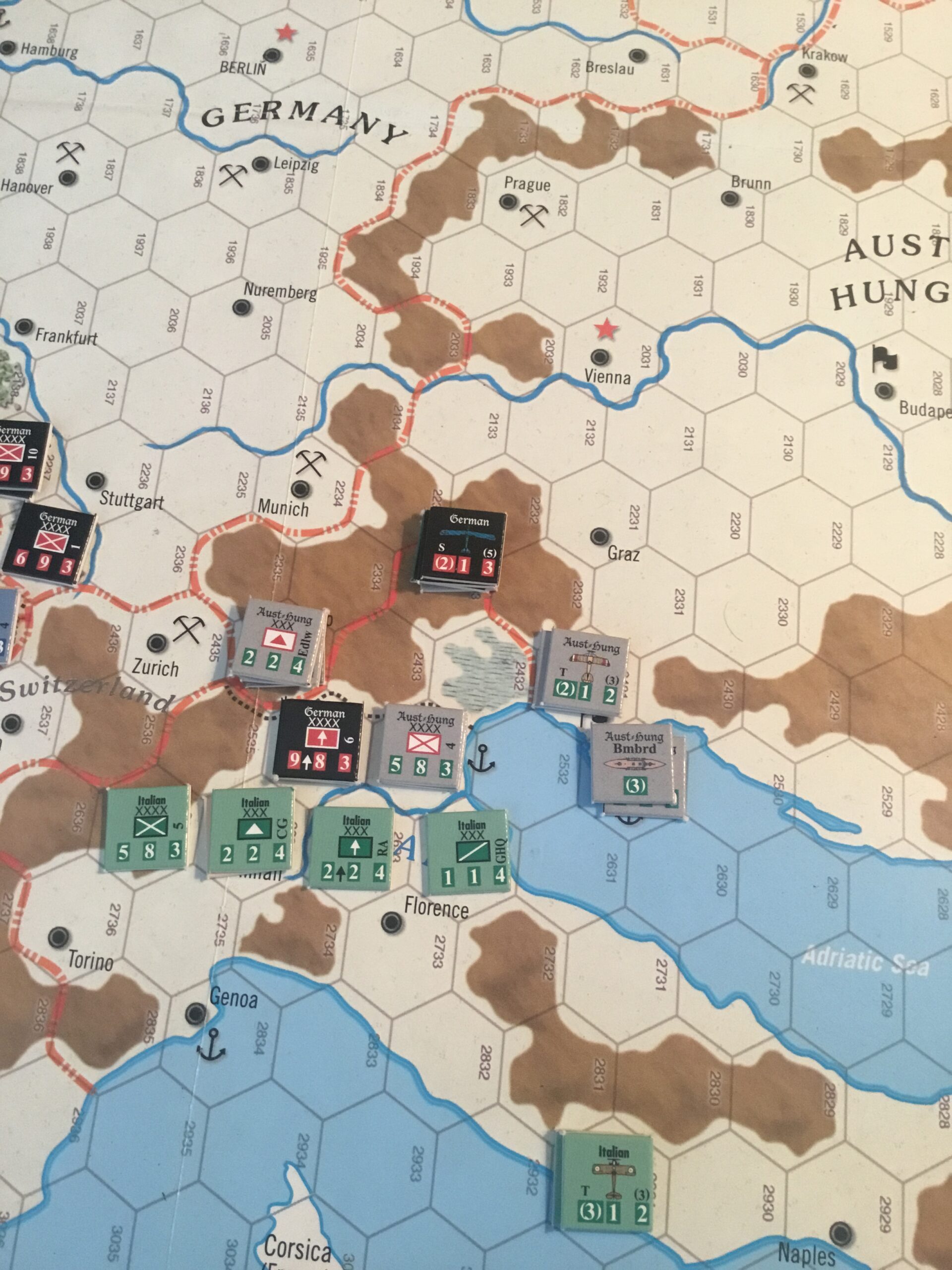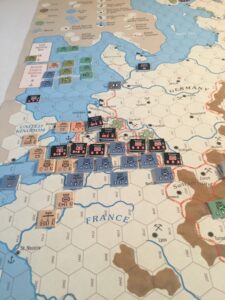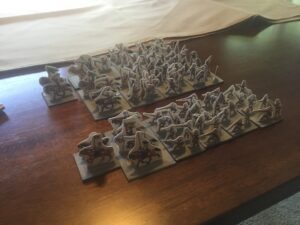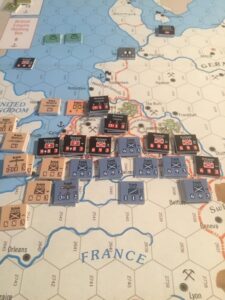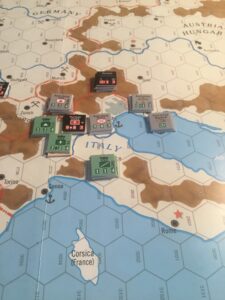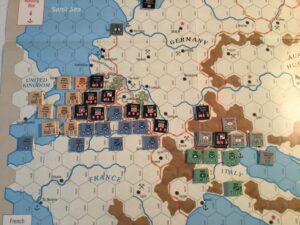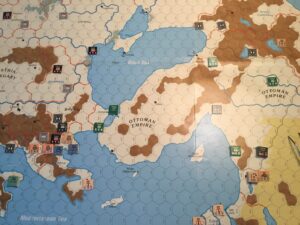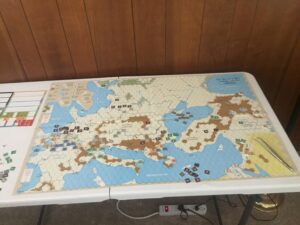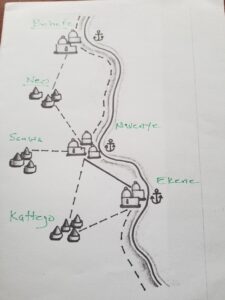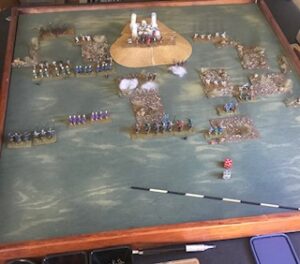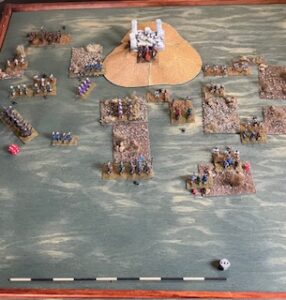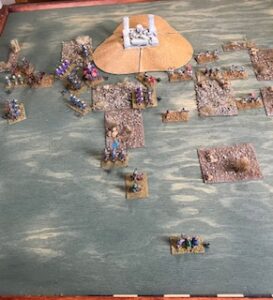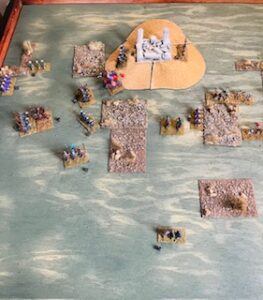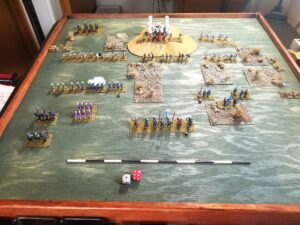The Allies added three (3) Italian and one (1) US Army during their mobilization phase. The Italians will arrive at the beginning of Turn 3, with the US Army not arriving until Turn 4.
Arriving Allied units were fed into gaps on the Western Front and Italy. A French army sailed to and arrived in Salonika. The Allies did not mount any attacks, content to remain on the defensive this turn.
At the end of the turn, the Victory Point count was Central Powers @ 132 and Allies @ 60. This would be a significant Allied victory if the game ended.
The calculation of victory points is a little different. Each country has a basic victory point production of 43 points. I had to figure that out myself. These points are for Major Capitals, Resource Centers and Political Cities occupied at the beginning of the game. My understanding is that these points (+/- points for enemy capitals, resources, political cities taken) are added at the beginning of the turn to the net victory points calculated at the end of the preceeding turn.
Here are the three major theaters and the end of the game turn.
